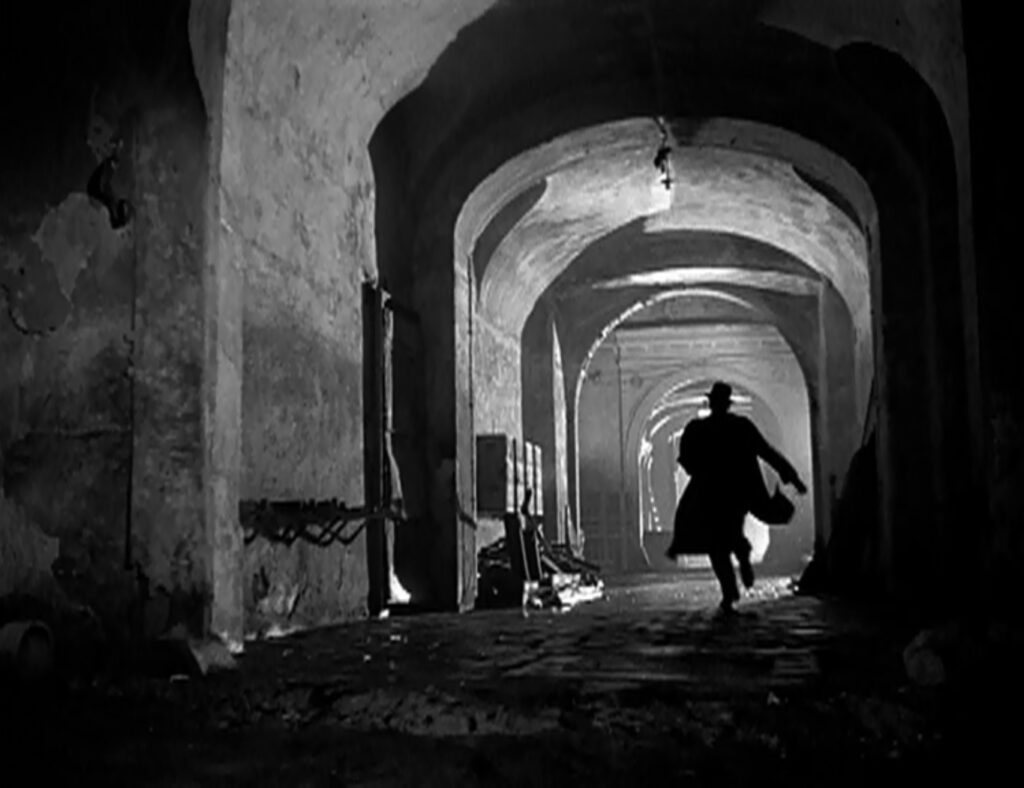
The Third Man
1949, directed by Carol Reed
Immediately after Holly Martins arrives in Vienna at the beginning of The Third Man, he walks under a ladder, portending a run of bad luck ahead. Moments later he’ll hear that his best friend has died. Left friendless in a foreign country, he’s treated rudely by the police, pegged as a murderer, chased through the city by an angry crowd, and embarrassed at a cultural gathering he doesn’t belong in. He falls in love with his friend’s lover, whose indifference to him turns to disdain and contempt. Things don’t get any better when he learns that Harry Lime is alive after all. His best friend turns out to be a monster killing children for profit. At the end Holly Martins is left completely alone in a cemetery.
It’s almost a wonder that such a downbeat story has become such a beloved classic, but there are plenty of reasons for its enduring appeal – its imaginative photography, the unique zither score, an atmospheric tour of Vienna, a bit of mystery, an emotional plot, and a spectacular chase through the sewers – yet there’s something else that viewers probably sense without quite defining it. In spite of all its horrors, The Third Man does not try to scare us – rather it creates a fairy tale tailored for adults.
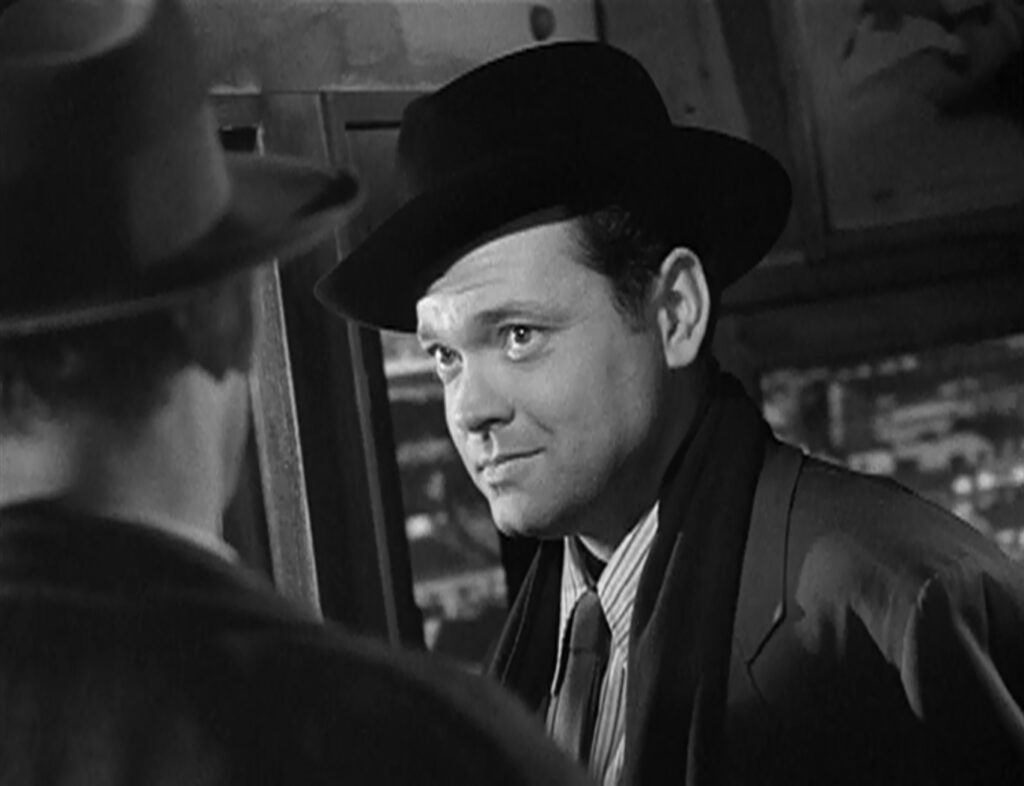
Like a fairy tale, The Third Man pulls us back into a childlike point of view. The settings are strange and dark, and the tilted camera angles make it hard to feel much security. Oversized caryatids, giant shadows, towering churches, and cavernous sewers conspire to make us feel small, and we’re left to follow a character with a childish name, Holly, who’s lost and helpless in this hostile labyrinth. The film is full of childhood imagery – a balloon vendor, a ferris wheel and amusement park, the little boy who identifies Holly as the porter’s killer. Holly Martins is a novelist who writes the kind of adventure books popular among boys, and he was drawn to Vienna to meet a childhood friend, making his visit like a regression into his early years. Anna says that Harry Lime “never grew up”, and at the outset it’s not entirely clear that Holly Martins ever did either.
These allusions to childhood are not at all whimsical, and nor is the movie’s intent. The plot hinges on children, as it turns out. More than the shoot-out in the sewers, the decisive point is when Major Calloway shows Holly Martins the victims of Lime’s penicillin racket in a children’s hospital ward.
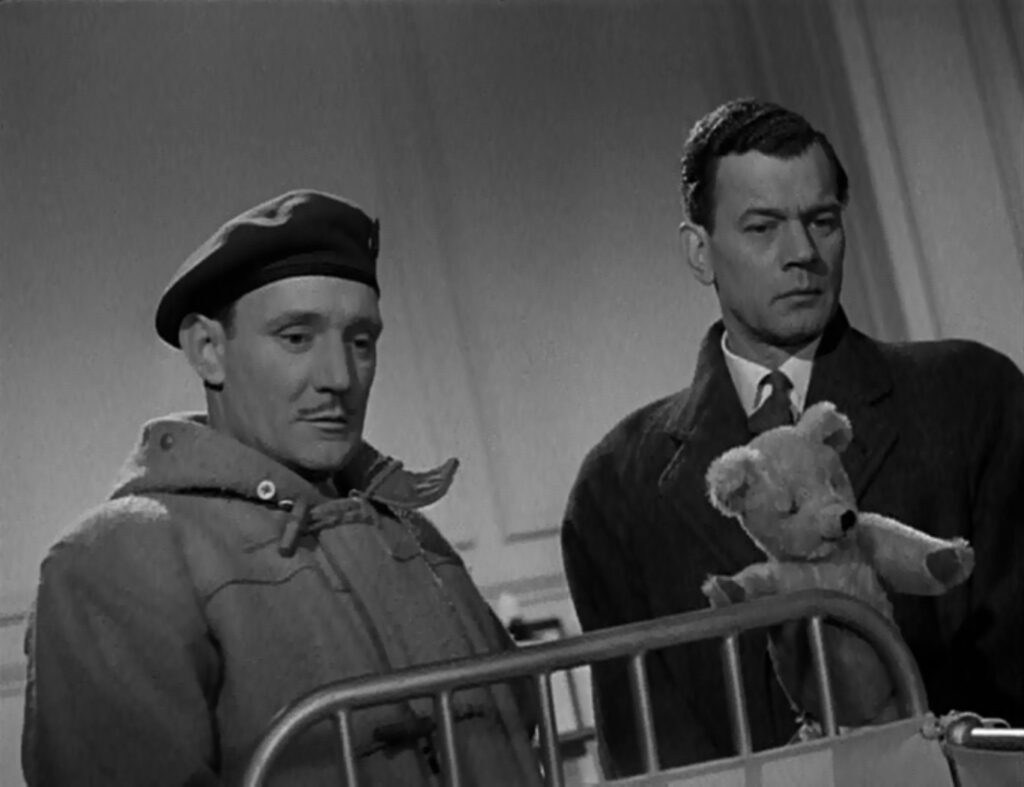
Traditional fairy tales, of course, are not meant to indulge children. They’re meant to shock them, in a palatable way, into a more mature point of view, to acquaint children with the terrors and disappointments of the real world and to fortify them for the lives they’ll have to face. The Third Man should have a similar effect, instructing viewers not to be naive about the corruption that even good people can so easily get used to. The film was shot in the ruins of Vienna barely three years after the defeat of fascism, and it shows how the horrors so recently beaten back at such great expense can sneak back up on us.
World War II was itself a recurrence of the unthinkable violence of World War I, and the thought of a third cycle of war must have given added weight to the movie’s warning. In many ways it echoes another movie from a similar moment after WWI – The Cabinet of Dr. Caligari. Both are stories of a man and the woman who loves his friend. In both films the man, at least presumably, kills his friend. Both feature fairgrounds with carousels, and in both a villain emerges dramatically from a dark coffin-like opening. Both movies, moreover, feature heavily distorted visuals – the jagged Expressionist sets of Caligari and the off-kilter cinematography of The Third Man.
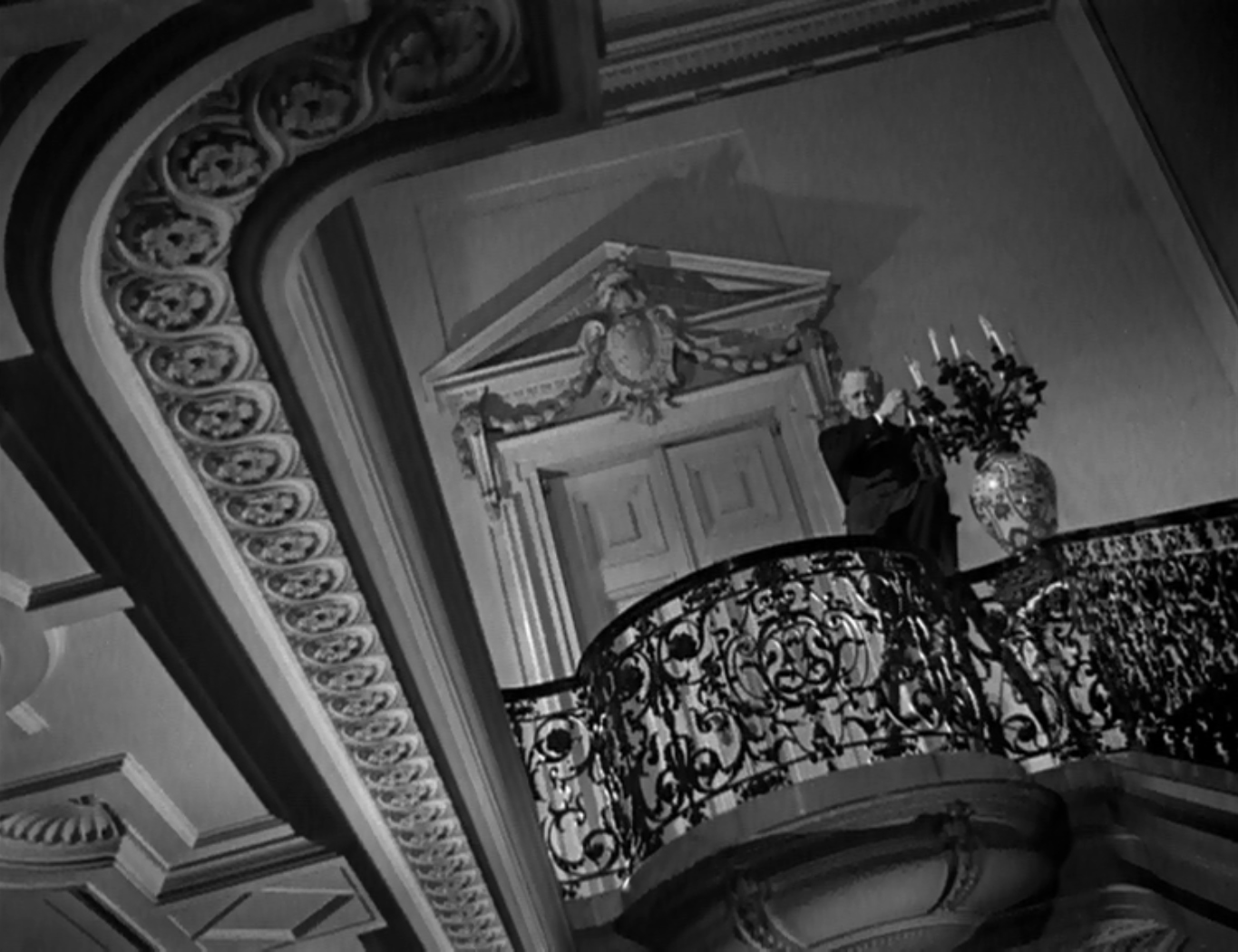
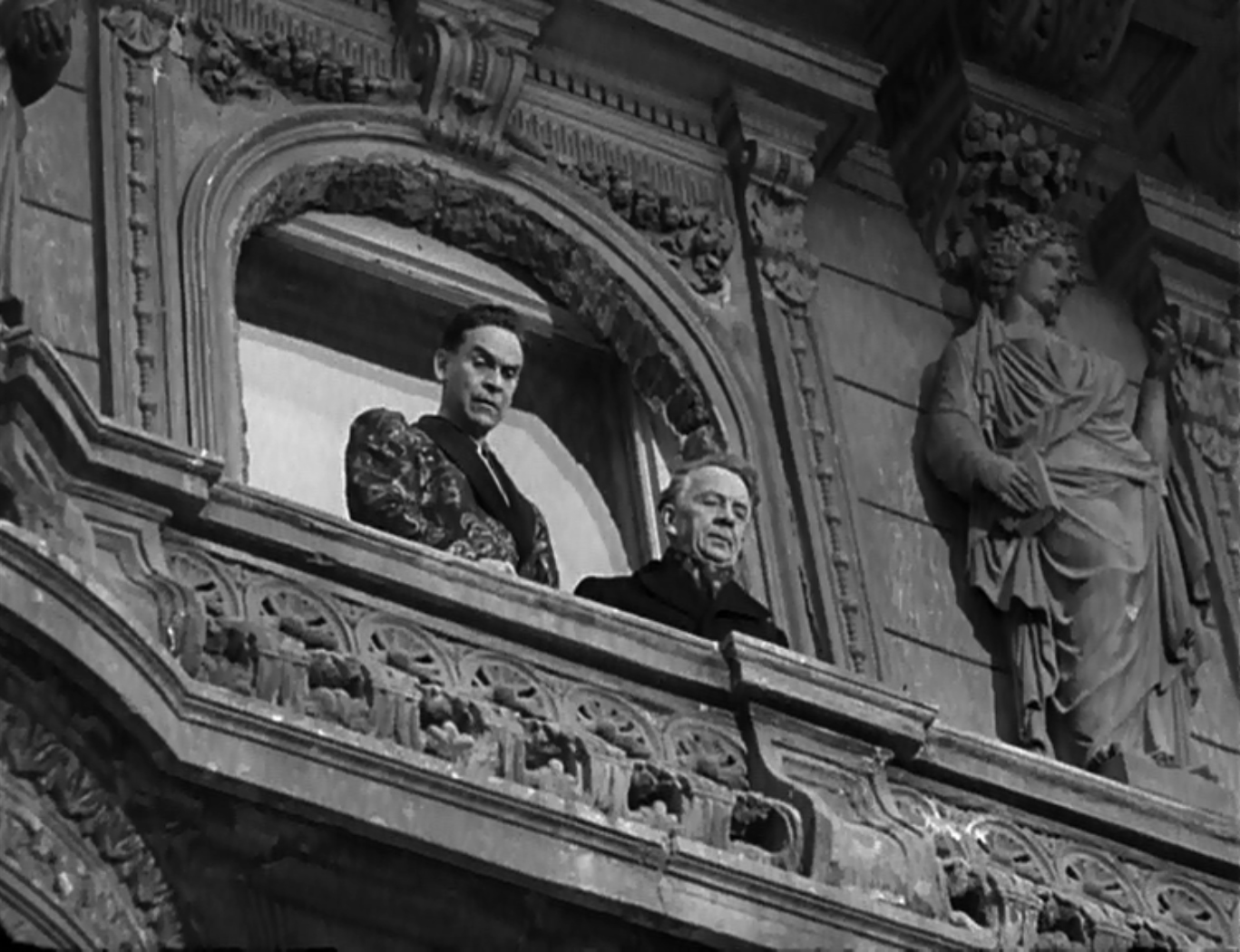
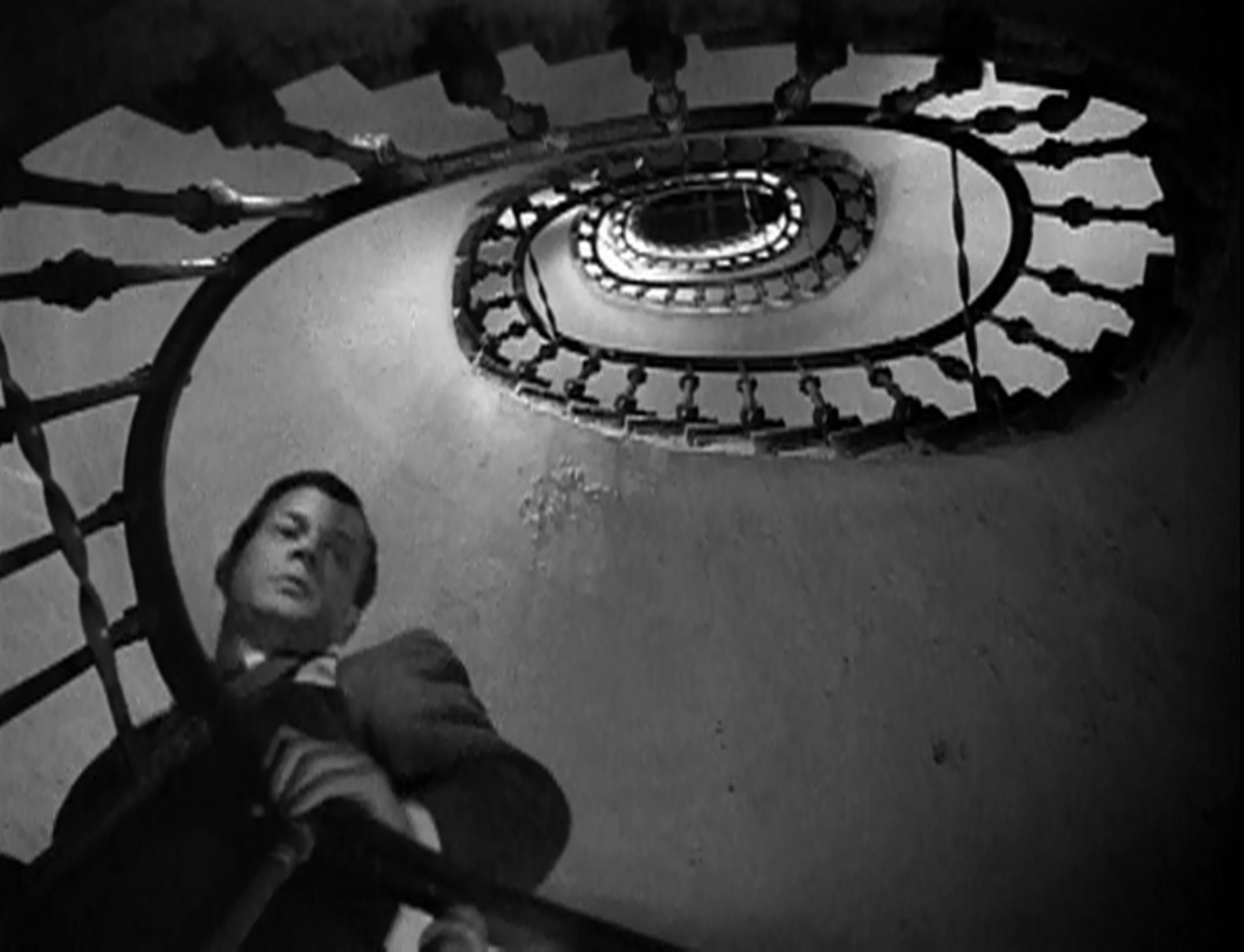
Both Caligari and The Third Man are stories of guilt that speak to the aftermath of a world war, and the visual distortions in both movies comment on the guilt underneath. In Caligari the sets externalize Francis’ madness, and the visual language of The Third Man likewise goes deeper than merely creating an unsettled atmosphere. Many of the shots lean left or right to imply a world out of balance, but the more telling shots are tilted up or down. Holly Martins first encounters the old porter above him in the stairway, and the porter calls attention to the up/down distinction by pointing up at “hell” and down at “heaven”. When Holly goes to Baron Kurtz and Dr. Winkel demanding to see Harry Lime, they loom over him from a balcony. Again, like a child, he must look up at people older than himself. When he escapes from his pursuers after his failed speech he unexpectedly flees up the stairs, and a dramatic shot of the helical stairway stresses that he’s seeking safety up above, like a child in its parents’ arms.
Even more meaningful are the shots looking down, particularly when Harry Lime speaks of the “dots” below the ferris wheel whose lives don’t matter. Although Lime dwells in the underworld, sometimes literally hiding in the sewer, he puts himself above humanity. Approaching his final rendezvous with Holly, he climbs down the ruins between classically styled statues like a Greco-Roman god descending from a pantheon. Even at his death he’s perched atop a stairway while Holly shoots him from below. The movie repeatedly contradicts his superior posturing. He’s introduced below Anna’s window, seen from overhead like the dots he has such contempt for, and when the porter describes the “third man” (presumably Lime) as someone “ordinary”, the film cuts pointedly out the window to dwell on the ordinary men passing below. In his last moments there’s a cut from Lime atop the sewer stairs to his desperate fingers reaching through the grate, the higher perspective deflating his godlike pretention.
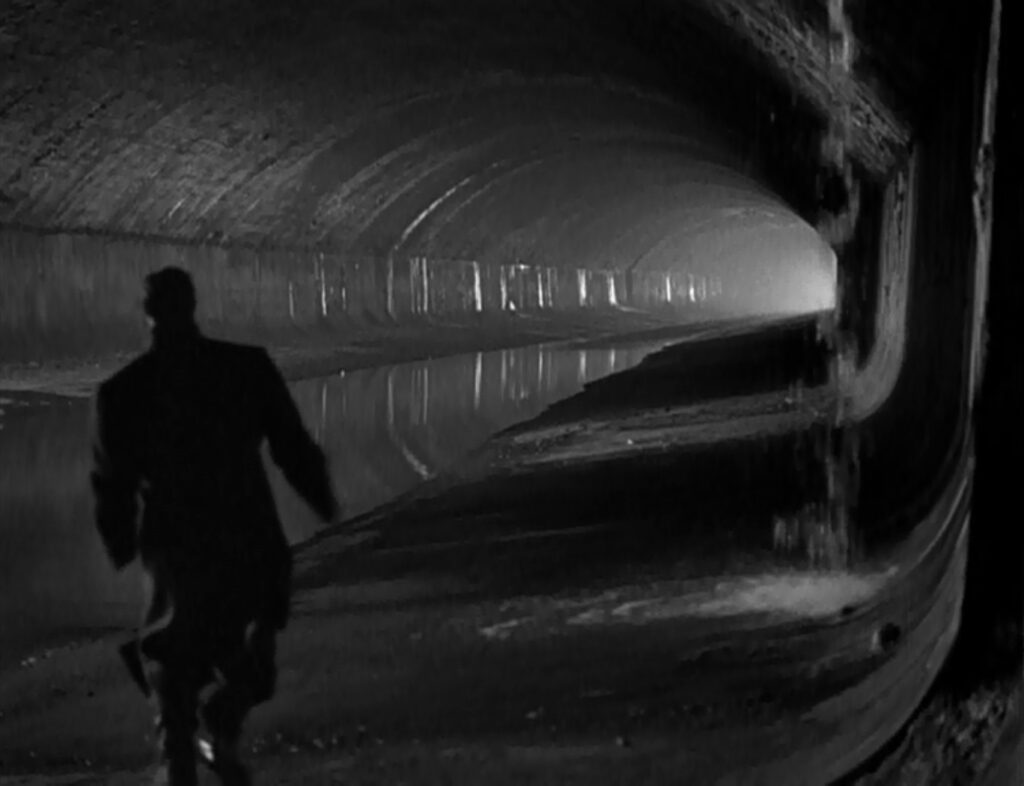
All these upward and downward shots allude to childhood, with an important difference. Upward views express a childlike helplessness, especially when Holly Martins is at a disadvantage. Downward views sometimes express and sometimes refute the arrogance of an adult who, like a small child, has never learned consideration for others. Harry Lime’s world-weariness doesn’t make him any less childlike; it’s only that his childishness is not as innocent as Holly Martin’s. The casting is appropriate, as Orson Welles had something of a boyish persona, and he plays the villain’s part with a relish that makes Anna’s comment that he “never grew up” believable.
Anna, the porter, the porter’s wife, and to some extent Holly Martins, before the hospital scene sobers him, represent another aspect of immaturity – a selfish fear of getting involved in the workings of justice. Following his wife’s urgings and wishing to stay out of trouble, the porter orders Holly to leave, although he later reconsiders. Anna is not bothered enough by Harry’s crimes to assist the police, and even Holly, who had stubbornly pursued his investigation when he believed Harry dead, is reluctant to help put an end to his friend’s crime spree. All of these characters, as old as they may be, exhibit some of the helplessness that a grown-up should have left behind. Of the major characters only Major Calloway comes across as thoroughly adult.
Consistent with the ever-present distinction between childhood and adulthood, the opening voice-over distinguishes between two Viennas: the graceful and charming “old Vienna” of Johann Strauss, and the younger Vienna of the black market. The new immature Vienna is corrupt and out of control, whereas the mature Vienna of Beethoven, Brahms, Schubert, and Johann Strauss lies buried in the same cemetery that brackets Holly Martins’ adventure.
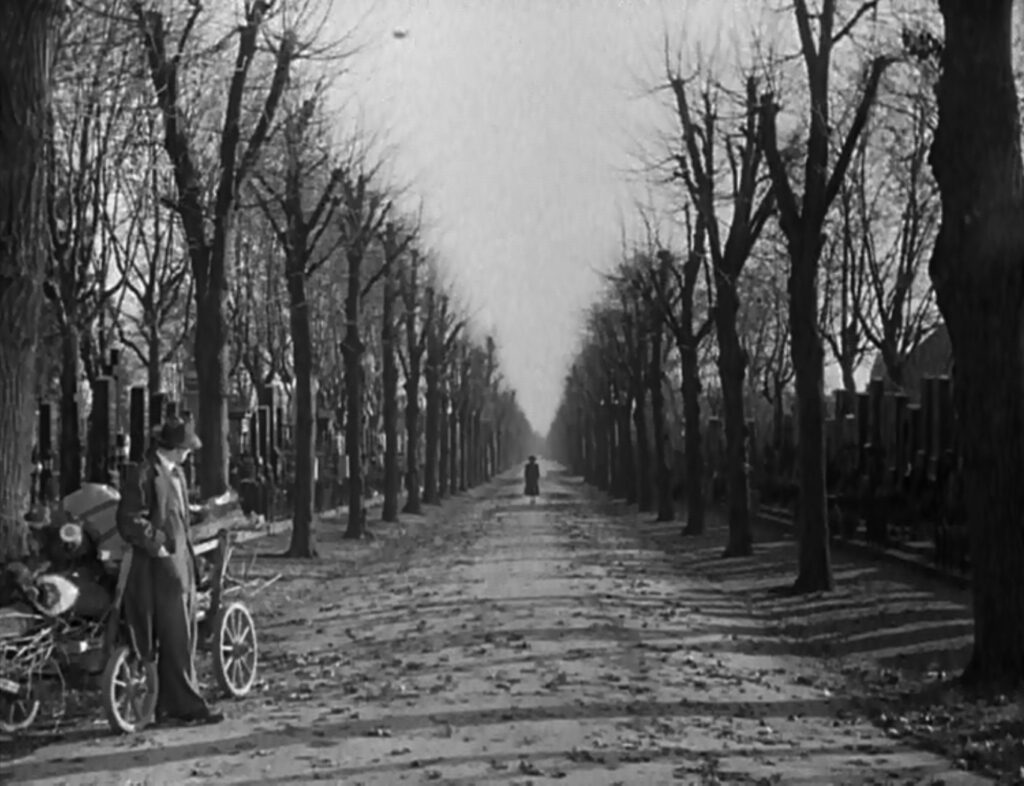
Even with all the corruption and cowardice it portrays, The Third Man is not cynical about postwar Europe. The potential for another cycle of violence and inhumanity is real, and it must be taken seriously, but as long as the world’s mature adults keep the unruly forces of juvenile waywardness and childlike helplessness in check, there should be room for hope. The movie may be a kind of fairy tale, but it’s also the story of how Holly Martins grows up. In the last shot, when Anna walks past him in the cemetery, we can appreciate that he has shed the last of his naivety, and that he is now fully attuned to the seriousness and the complexity of life.
CONNECTIONS:
The Cabinet of Dr. Caligari – Story of murder, broken friendship, and jilted love; distorted settings; carnival with a carousel; sinister character’s dramatic entrance out of a recessed opening
A Matter of Life and Death – Plea to avert a new round of world war after the end of World War II
Dead Reckoning – Man staying in a city shortly after WWII to clear his friend’s name, getting involved with his friend’s lover
Les enfants terribles – Continuum between childhood and adulthood
The Night of the Hunter – Conscious effort to cast the viewer in a childlike point of view; villain introduced in an overhead shot
Vertigo – Warning against the dangers of a juvenile mindset in adults
Andrei Rublev – Overhead view as a God’s-eye perspective
La rupture – Fairy tale for grown-ups
The Wind Will Carry Us – Systematic distinction between high & low; line of dialogue reversing positions of heaven and hell; recurring visits to a cemetery
Dancer in the Dark – Overhead view as a God’s eye perspective